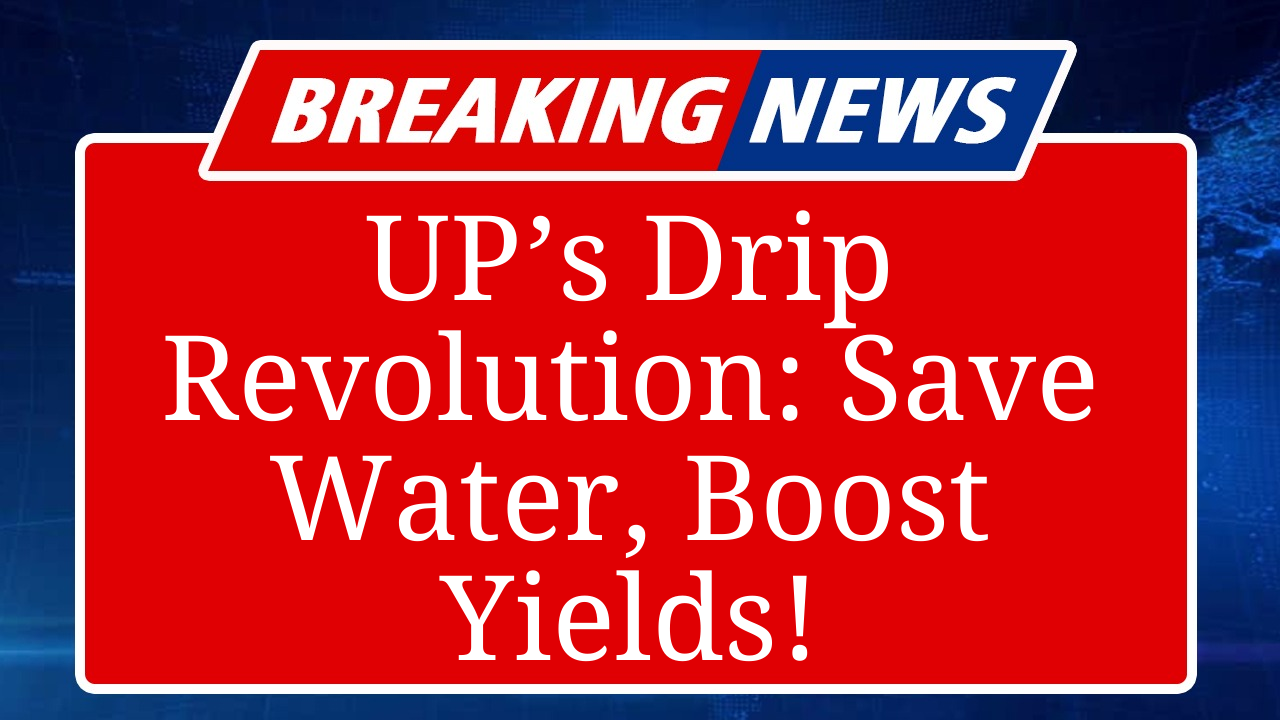“Uttar Pradesh is embracing drip irrigation to boost agricultural productivity and conserve water. New government initiatives and advanced systems like Netafim’s Toofan are reducing costs and increasing yields. With 70% of India’s freshwater used in agriculture, these efforts aim to enhance sustainability and farmer prosperity in UP’s water-scarce regions.”
Uttar Pradesh Pioneers Drip Irrigation for Sustainable Agriculture
Uttar Pradesh, India’s agricultural heartland, is witnessing a significant shift towards drip irrigation systems to address water scarcity and enhance crop yields. The state government, in alignment with the central government’s Pradhan Mantri Krishi Sinchayee Yojana (PMKSY), has intensified efforts to promote micro-irrigation technologies, targeting a 20% increase in water efficiency by integrating smart irrigation systems. As of 2025, drip irrigation covers approximately 19% of India’s agricultural land, equating to 6,112.05 thousand hectares, with UP playing a pivotal role in this expansion.
In a recent development, Netafim India introduced its innovative “Toofan” drip line, a clog-resistant system tailored for Indian agricultural conditions. This technology promises a cost reduction of 20-25% per hectare, making it accessible for small and marginal farmers. Designed for long-term use, Toofan delivers a regulated water flow of 1 to 2.2 liters per hour and is expected to cover 25,000 hectares by 2026, benefiting 35,000 farmers across UP and beyond. The system’s precision ensures water and nutrients reach plant roots directly, reducing evaporation and runoff while boosting crop quality and yield.
The state’s push for drip irrigation is driven by the need to optimize water use, as agriculture consumes 70% of India’s freshwater. Traditional flood irrigation methods waste up to 70% of water due to evaporation and runoff, a critical issue in UP’s water-stressed regions like Bundelkhand. By adopting drip systems, farmers can save up to 50% of water compared to conventional methods, while also reducing fertilizer use by 30% through fertigation—delivering nutrients directly to roots. This not only lowers costs but also minimizes environmental impact by reducing reliance on chemical inputs.
Government support has been instrumental in this transformation. Under PMKSY, UP farmers receive subsidies covering up to 90% of drip irrigation installation costs, alongside technical assistance and training programs. The state has also integrated remote sensing and soil moisture sensors in pilot projects, particularly in districts like Lucknow and Kanpur, to optimize irrigation schedules. These efforts have led to tangible results: farmers using drip irrigation for crops like sugarcane and cotton report yield increases of up to 33% and water savings of 30-50%.
Companies like Jain Irrigation Systems and Kothari Group are also contributing to UP’s irrigation revolution. Jain’s comprehensive drip systems, backed by agronomic support, have reached over 10 million farmers nationwide, with a strong presence in UP. Kothari’s surface and sub-surface drip systems, costing between ₹25,000-50,000 per acre, cater to diverse crops, from closely spaced vegetables to widely spaced orchards. These systems ensure minimal soil disturbance, reducing weed growth and soil salinity—a growing concern in UP, where 13 million hectares of irrigated land face waterlogging risks by 2025.
Technological advancements are further enhancing drip irrigation’s impact. Precision irrigation, incorporating sensors and automation, allows farmers to monitor soil moisture and adjust water delivery in real time. In UP’s Indo-Gangetic plains, where soil salinity and groundwater depletion are pressing issues, such innovations are critical. For instance, farmers in Punjab, a neighboring state, have reported 30% water savings using similar technologies, a model UP aims to replicate.
The economic benefits are equally compelling. Drip irrigation reduces labor costs by automating water delivery, freeing farmers from constant monitoring. Higher yields and better crop quality translate into increased profitability, particularly for high-value crops like fruits and vegetables. In UP, farmers like Vinayak Patil, who adopted drip irrigation for sugarcane, have reported improved soil health and doubled yields, aligning with the “grow more with less” philosophy.
Despite these advancements, challenges remain. High initial installation costs deter some small farmers, even with subsidies. Inconsistent water sources and reliance on monsoons can reduce the perceived need for drip systems during rainy seasons. Additionally, bureaucratic delays in subsidy approvals and a lack of widespread awareness about maintenance practices hinder adoption. To address these, UP is expanding training programs and exploring low-cost innovations like solar-powered drip kits and mobile-based irrigation alerts.
The state’s commitment to drip irrigation aligns with India’s broader goal of sustainable agriculture. With a projected population of over 1.4 billion by 2030, ensuring food security while conserving water is paramount. UP’s adoption of drip irrigation, supported by government policies and cutting-edge technologies, is a step toward resilient farming practices that can withstand climate change and resource scarcity. As the state continues to scale up these initiatives, it sets a model for other agrarian regions to follow.
Disclaimer: This article is based on recent reports, government data, and industry insights available as of September 2025. Information is sourced from credible platforms like the Press Information Bureau, Netafim India, and agricultural research websites. Readers are advised to verify details with local agricultural authorities for specific subsidy and implementation guidelines.

